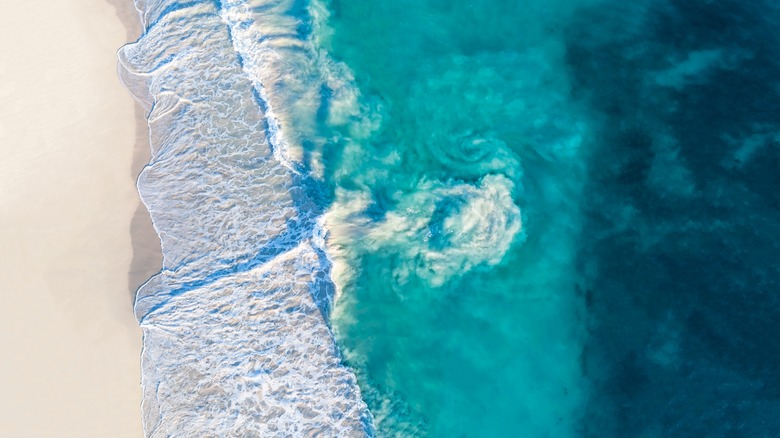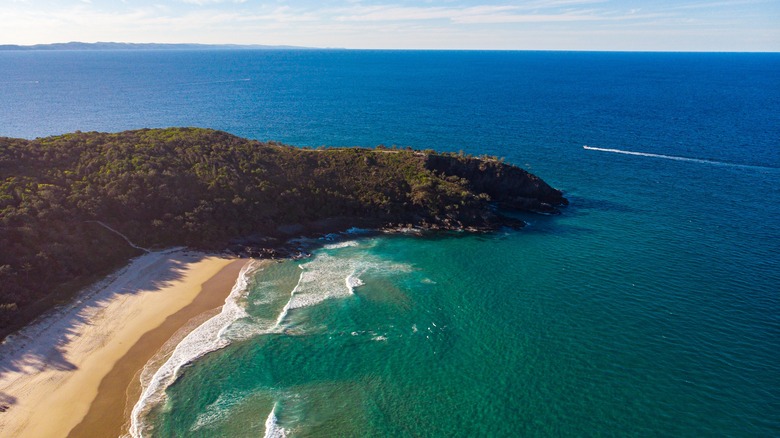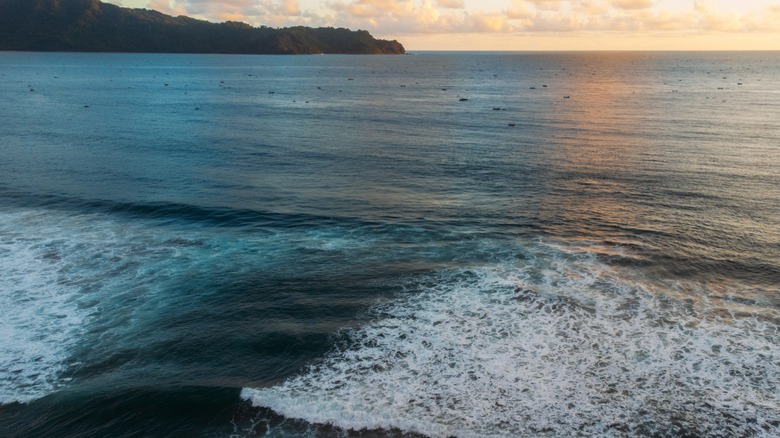The Easiest Way To Identify Where Dangerous Rip Currents Are On The Beach
You're enjoying a relaxing and fun beach day around the popular spring break city of Fort Lauderdale when you spot something — a channel of water that looks different from the waves around it. Don't be deceived: this might seem like a harmless quirk of the natural flow of ocean water, but a narrow current of water flowing out to sea that looks different from the surrounding waves can be a deadly seaside phenomenon known as a rip current.
To learn how to identify these dangerous currents, Islands spoke to health and safety expert Mathew Giachetti, a representative of the United States Lifesaving Association (USLA), on behalf of Fox Entertainment's 'Rescue: HI-Surf' x LIFEGUARDS FIRST Advocacy Campaign.
"Learn to identify rip currents and take the time to evaluate the water before you enter the water," was Giachetti's primary piece of advice. There are a lot of different ways a rip current can look, but you should keep your eyes open for channels in the water that stand out. That could mean a surging stream of choppy water, one narrow path where random ocean gunk like seaweed and foam are flowing out to sea, or even just a strip where the water seems darker and calmer than the rest of the water you can see from the beach. In addition to scanning the water for potential rip currents yourself, you should also check in with on-duty lifeguards who have more experience identifying rip currents before heading into the water (and of course, only go swimming from beaches where there is a lifeguard on duty to keep you safe).
What makes rip currents so dangerous?
Rip currents have made Florida's popular Ormond Beach among the deadliest in the United States – but why? While Mathew Giachetti assured us that these currents won't pull beachgoers under, you should be aware that rip currents pull everything in their path out to sea. Swimmers may suddenly find themselves far from the beach — possibly too far for them to be able to swim back without succumbing to exhaustion. Exactly how far from the shore anyone unfortunate enough to get caught in a rip current will end up depends on the particular current, Giachetti told us. "Sometimes a rip current ends just beyond the line of breaking waves," he said. "However, others may continue to flow hundreds of yards offshore."
This entire terrifying process can happen very, very quickly. Even if you're an excellent swimmer, you could easily find yourself swept out to sea before you have a chance to react. "Rip current speeds vary," Giachetti explained. "Average speeds are 1-2 feet per second, but they have been measured as fast as 8 feet per second — faster than an Olympic swimmer!"
How to escape from a rip current
If you're planning to swim in the ocean, you should know not only how to identify rip currents but also what to do if you find yourself, or see another swimmer, caught in their path. You may want to think twice before visiting beaches known for rip currents, but just avoiding those most dangerous beaches doesn't mean that you should let down your guard. In fact, Mathew Giachetti warned us, "Assume that rip currents are always present at surf beaches."
Because rip currents are so powerful, Giachetti says you should never try to swim directly against them. Instead, you may be able to swim to the side, parallel to the shore, or towards breaking waves to get clear of the current. Additionally, "You may be able to escape by floating or treading water if the current circulates back toward shore."
If you, or anyone else around you, is being pulled away from the shore, you should shout and wave for help from a lifeguard. It's never a good idea to dive into the water to go after someone that is caught in a rip current, as you may end up getting pulled out yourself. Instead, try to direct the person to swim parallel to the shore or throw them a floatation device to help them tread water until a professional lifeguard can reach them. To help these vital rescuers, check out Fox Entertainment's 'Rescue: HI-Surf' x LIFEGUARDS FIRST Advocacy Campaign and help advocate for open-water lifeguards to be recognized as first responders.


